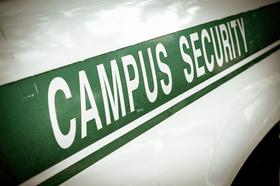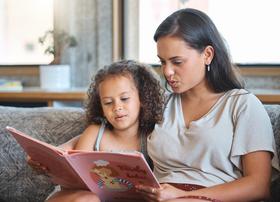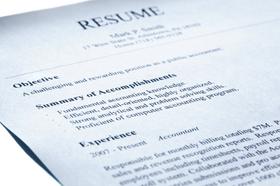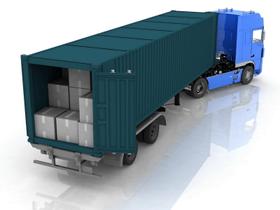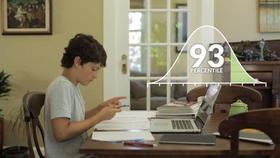A tragedy like Newtown or Parkland could never happen in a private school, right? I certainly hope that it never does, but there are no guarantees. There are so many variables to consider in all of the mass shootings that have occurred since the Columbine attack in 1999 that it would be foolish to say that such events could not happen in a private school. Statistically, the odds of such an event are low. However, when it comes to the safety of our children, it is simply unacceptable to gamble. We, as parents and school administrators, must take steps to prevent disaster from occurring on our watch.
Equally unforeseen are natural disasters such as tornadoes, flooding, and earthquakes. Granted, certain regions of the country are more prone to these events than others. But you only have to read the news reports to realize that things can and do happen when and where you least expect them to.
So, against this gloomy backdrop, let's look at what private schools can do to protect their communities.
Protection
As I researched this article, I was impressed by the number of organizations that my search string "emergency response policy and procedure for schools" produced. You will find plenty of relevant and useful reading when you use a search string with a narrow focus.
As Benjamin Franklin wisely noted, "A pound of prevention is worth a pound of cure." While Franklin was referring to fire prevention, his words speak clearly to the situation in which we find ourselves today. McGowan Program Administrators offers a 5-point checklist of steps you should consider to protect your school against active shooter incidents.
McGowan's 5-point checklist includes:
- Consider improved security measures
- Develop an evacuation plan
- Train employees to respond
- Provide emergency equipment
- Insure your business
Item one is probably the most expensive item on the list. For example, if you have one main building with glass doors and windows at the entrance, you must harden those glass panels. The doors must be locked electrically, and visitors must be buzzed in as needed. And what about security cameras so that staff can see who is at the door? Well, you can begin to see why I recommend that you ask two or three professional security firms to survey your buildings and campus and make recommendations.
Developing an evacuation plan and training employees on how to respond are steps to add to emergency preparedness protocols that you already have to deal with fire or severe weather events such as tornadoes and hurricanes. Upgrading your emergency equipment can be done within your usual fiscal planning in most cases.
As far as active shooter and other disaster insurance are concerned, you must ensure the school is covered. Consult with your insurance professional to understand what kind of coverage is available.
The situation in many schools.
It has been 18 years since the Columbine disaster. That is more than enough time for private schools to have reviewed their policies, protocols, and procedures for dealing with an active shooter. Yet, sadly, there are still many schools that have not taken steps to protect their communities. In a conversation which I had the other day with a professional educational consultant, she told me about the response she received from the head of her son's private school when she asked about protocols and training for an active shooter situation. "The board is looking into that issue." Five years after the Newtown disaster, the board is just now looking into the issue." Needless to say, my friend was appalled.
While I cannot provide any hard facts and data to support my hunch, my hunch is that many private schools somehow think that they are immune from such horrible events. But they are not immune at school. Schools should be safe places for students, teachers, and staff. It's up to the school community to make sure that they are.
That is why I placed McGowan Administrators 5 point checklist at the beginning of this article. If you are the parent of a child in a private school, and you have not had a recent communication about how your child's school is planning for a disaster, then you need to ask. When you visit your child's school, look around carefully. How much exposure does the school have, in your opinion? I can think of several schools where anybody could pull right up to the main entrance without being admitted through a security checkpoint or gate. Do you work at a school that has weak or non-existent response disaster response plans in place? Is the security in your school's buildings adequate? Have you had an active shooter drill recently?
Policies
There is no need to reinvent the wheel when devising a disaster preparedness policy. Use the resources offered by the following organizations for guidance.
- Sample School Emergency Operations Plan
- National Association of School Nurses
- American Academy of Pediatrics
- National Fire Protection Association
Teach your children how to respond to emergencies.
One of the most important things we can do for our children is to teach them how to respond in an emergency situation. You have probably already taught them basic emergency responses such as calling 911, how to deal with somebody who is choking, and so on. So, teaching your child how to respond to an active shooter or a terrorist situation will build on that solid foundation that you have already laid. Spread your instruction over several sessions. Don't overwhelm your child. Provide visuals. Show them what other children in emergency situations did. Your calm, logical, step-by-step explanations of how to respond will be a huge comfort to your child if and when disaster strikes because she will know what to do.
Questions? Contact us on Facebook and Instagram. @privateschoolreview
#SchoolSafety #EmergencyPreparedness #ActiveShooterDrills #DisasterResponse #PrivateSchoolSecurity








